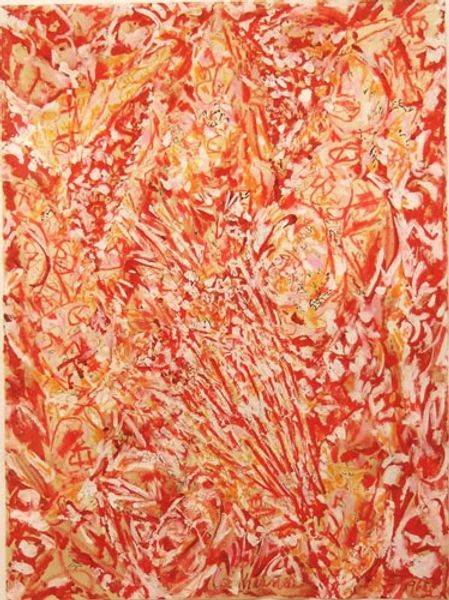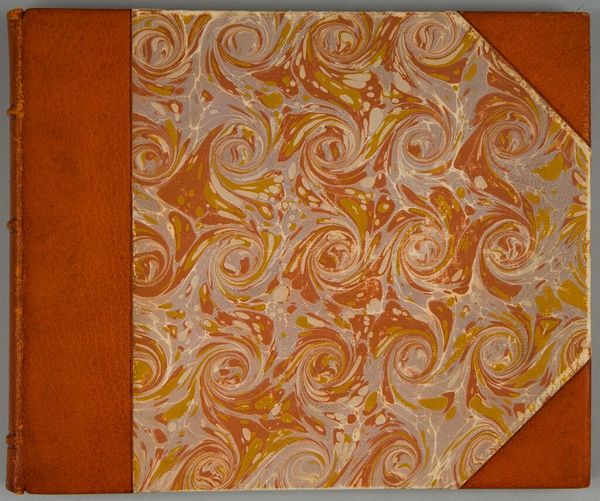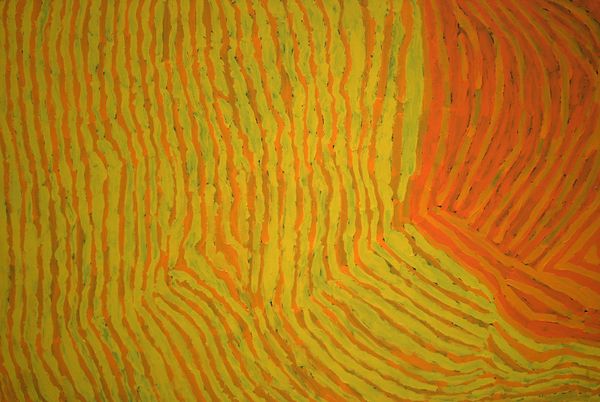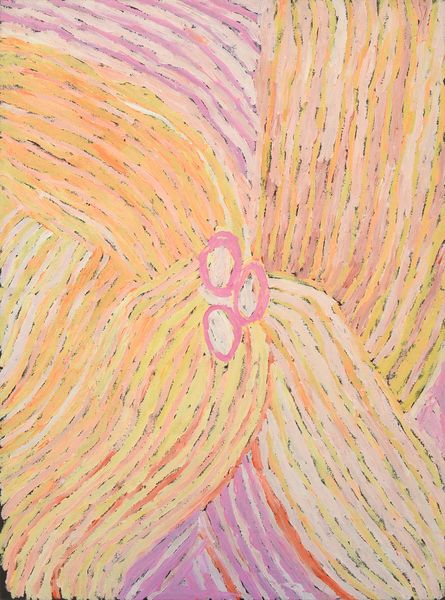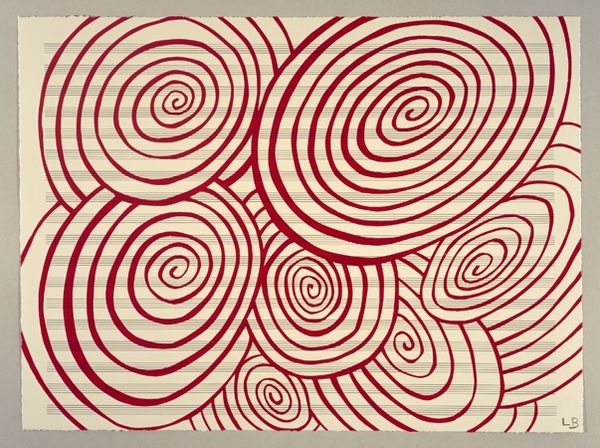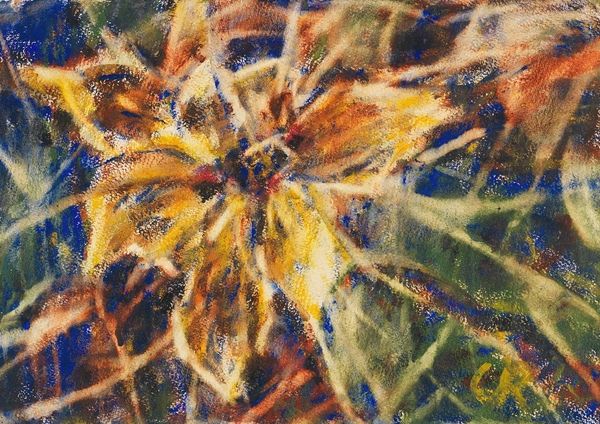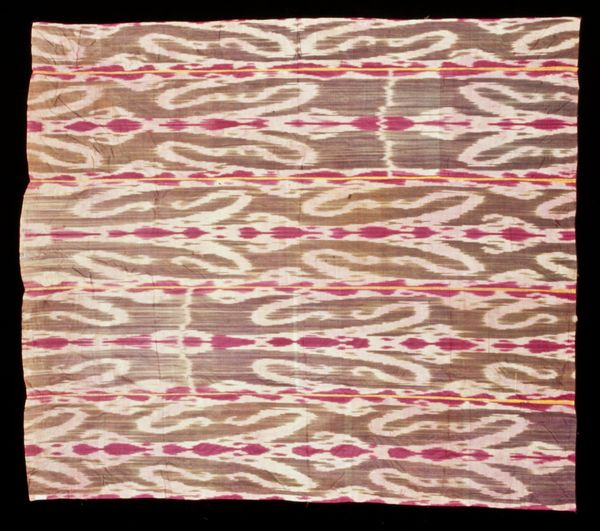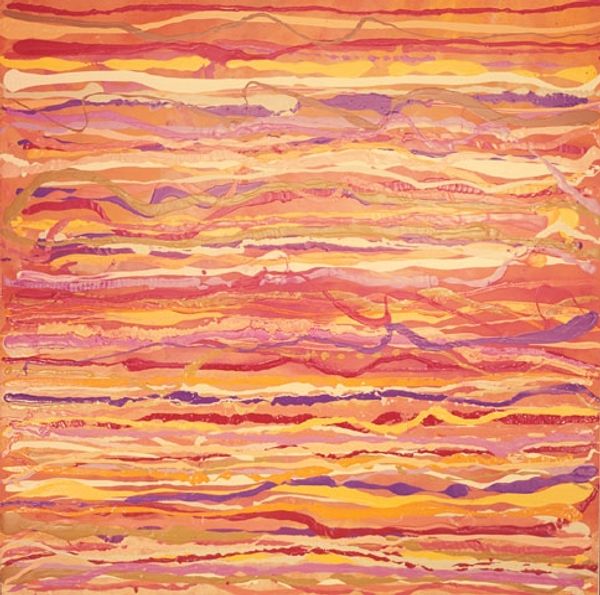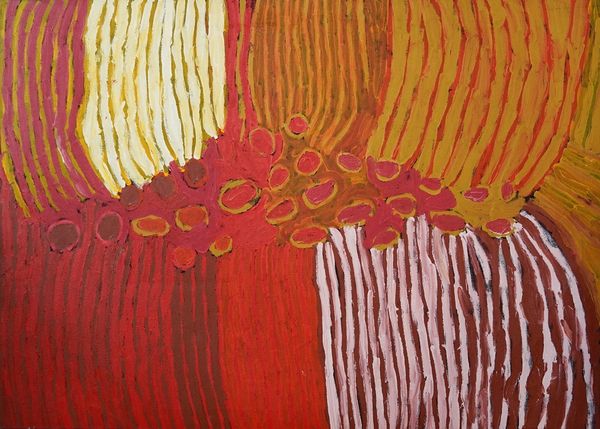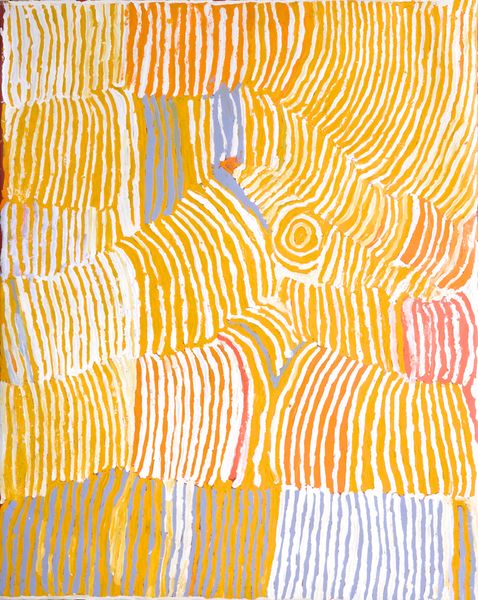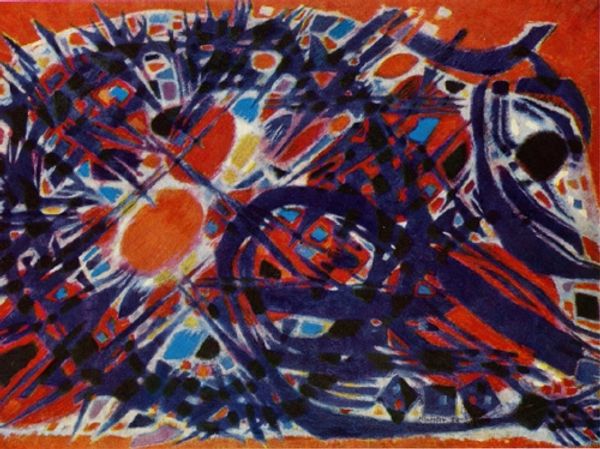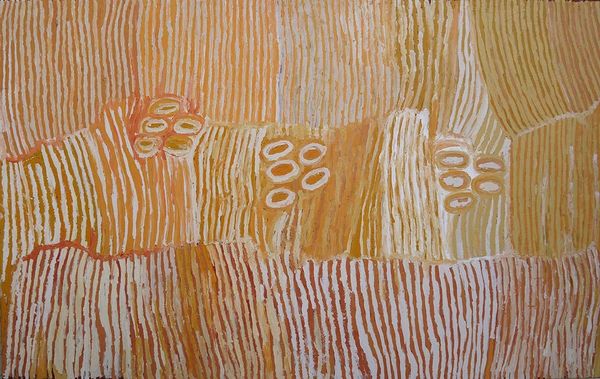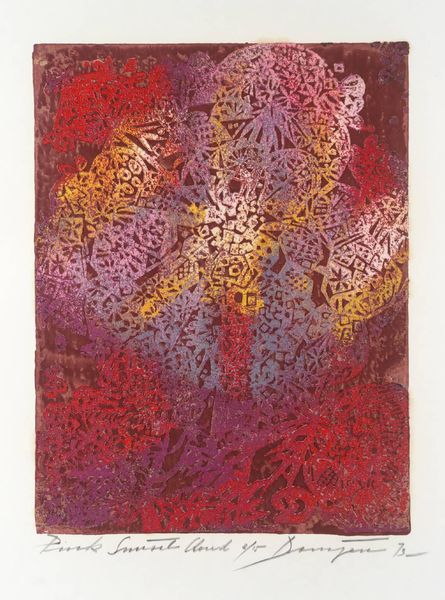
painting, acrylic-paint, ink
#
abstract-expressionism
#
contemporary
#
painting
#
acrylic-paint
#
ink
#
abstract pattern
#
linocut print
#
geometric
#
line
Copyright: Forrest Bess,Fair Use
Curator: Looking at Forrest Bess's "The Spider," made in 1970 using acrylic paint and ink, the raw, almost primal simplicity really jumps out, doesn't it? Editor: Absolutely. It’s incredibly striking. The intense red against those stark white lines… there's something visceral about it. It feels… urgent. What do you think the use of materials communicates here? Curator: For Bess, the materiality was everything. His preoccupation with the hand-made, with elemental processes… This was all part of his attempts to reconcile his own internal struggles with his artistic output. Think about the ink interacting with the acrylic. Are those purposeful ruptures? Scratches? Or part of the unpredictable nature of layering these things? Editor: I'm immediately thinking about Bess's position within the art world, largely an outsider, self-taught. It’s interesting how the “naïve” style, as some might term it, gains power and resonance because of his personal story, the cultural context, right? How might that contribute to its reception in, say, the late 20th century art market, a marketplace becoming fascinated with authenticity and unique biographies? Curator: The fact that he eschewed traditional training undoubtedly informs this raw aesthetic, his approach to composition and how he handles paint is so immediate. What about the symbolism for you? The 'spider'… do you see it relating to wider anxieties? Editor: Spiders often represent creativity, weaving one’s own destiny, but they’re also associated with entrapment, danger, the feminine divine…Given Bess's gender identity explorations, and struggles within a mid-20th century society still constrained by very traditional norms, how could that play out for viewers then and even for audiences now? Curator: It all resonates back to how he uses the materials. Not striving for polished perfection, but showing the inherent qualities of those chosen media, letting their textures and imperfections contribute to the image itself, the story of that making. It speaks of the vulnerability and boldness simultaneously, the push and pull of artistic creation. Editor: Absolutely. The power in Bess’s work often lies in how he invites us to unpack not only the images, but also the messy contexts in which they came into being, and what such an unconventional presentation of himself would’ve meant to audiences in that moment. Curator: Right. Thinking through these layers really brings into focus what this seemingly simple piece manages to accomplish in all its messy complexity. Editor: A compelling look indeed at how the personal intersects with the artistic and cultural in really powerful ways.
Comments
No comments
Be the first to comment and join the conversation on the ultimate creative platform.
